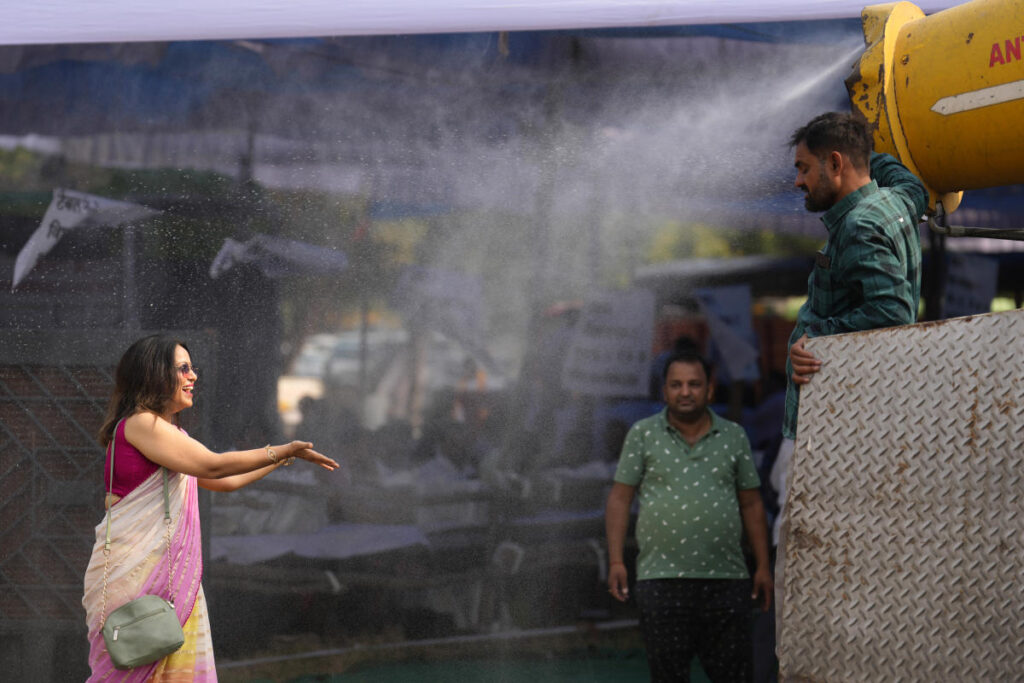If climate change By hitting disasters such as cyclones, floods and droughts more intensely, more frequently and in more places, fewer people worldwide are dying from these catastrophes thanks to better warnings, planning and resilience, a top United Nations official said.
The world hasn’t really noticed that the kinds of storms that once killed tens or hundreds of thousands of people are now claiming only a handful of lives, says the new United Nations Assistant Secretary-General Kamal Kishore, who heads the UN Office for Disaster Risk Reduction. Associated press. But he said much more needs to be done to prevent these disasters from pushing people into abject poverty.
“Fewer people are dying from disasters and if you look at that as a percentage of the total population, it is even fewer,” Kishore said in his first interview since taking office in mid-May. “We often take for granted the progress we have made.”
“Twenty years ago, there was no early warning system for tsunamis, except for a small part of the world. Now the entire world is covered by a tsunami warning system 2004 tsunami that killed approximately 230,000 people in Indonesia, Sri Lanka, India and Thailand, Kishore said.
People are getting better warnings about tropical cyclones — also called hurricanes and typhoons — so now the chances of dying in a tropical cyclone in a place like the Philippines are about a third of what they were 20 years ago, Kishore said.
As a former disaster chief for India, Kishore points to how his country has reduced deaths thanks to better warnings and community preparedness, such as hospitals being ready for a surge in births during a cyclone. In 1999, a super cyclone struck eastern India, killing nearly 10,000 people. Then a storm of almost similar size struck in 2013, but it killed only a few dozen people. Last year, under the supervision of Kishore, Cyclone Biparjoy less than 10 people killed.
The same goes for flood deaths, Kishore said.
The data supports Kishore, said disaster epidemiologist Debarati Guha-Sapir of the Catholic University of Leuven in Brussels, who is a global disaster database. Her database – which she acknowledges is missing pieces – shows that the global number of deaths per storm has fallen from about a ten-year average of 24 in 2008 to a ten-year average of about eight in 2021. The number of flood deaths per storm has increased from ten-year average annual averages of almost 72 to about 31, her data show.
While there are fewer deaths from disasters worldwide, there are still pockets in the poorest countries, especially in Africa, where deaths are worsening or at least leveling off, Guha-Sapir said. It’s a lot like public health efforts to eradicate measles, which is succeeding in most places, but the areas least able to cope are not improving, she said.
India and Bangladesh are good examples of better disaster management and prevention of deaths, especially from cyclones, Guha-Sapir says. In 1970, a cyclone killed more than 300,000 people in Bangladesh in one of the worst natural disasters of the 20th century and now “Bangladesh has done fantastic work in disaster risk reduction for many years,” she said.
It’s important to point to victories, Guha-Sapir said: “Gloom and doom will never get us anywhere.”
While countries like India and Bangladesh have created early warning systems, fortified buildings like hospitals, and know what to do to prepare for and respond to disasters, that’s in large part just because these countries are getting richer and better educated and therefore can better handle disasters and protect themselves, Guha-Sapir said. Poorer countries and people cannot do that.
“Fewer people are dying, but that is not because climate change is not happening,” Kishore said. “That is despite climate change. And that’s because we’ve invested in resilience, invested in early warning systems.”
Kishore said climate change makes his job harder, but he still doesn’t feel like Sisyphus, the mythical man pushing a giant boulder up a hill.
“You get greater dangersmore often and (in) new regions,” Kishore said, saying places: like Brazil that used to not worry too much about flooding are now being devastated. The same applies to extreme heatAccording to him, this used to only be a problem for certain countries but has now become global, pointing to almost 60,000 deaths from heat waves in Europe by 2022.
India, where temperatures flirt with 122 degrees (50 degrees Celsius)has reduced heat deaths with specific regional plans, Kishore said.
“But with the new extreme temperatures we are seeing, every country must redouble their efforts to save lives,” he said. And that means looking at the built environment of cities, he added.
Reducing deaths is only part of the battle to reduce risks, Kishore said.
“We are doing a better job of saving lives, but not livelihoods,” Kishore said.
While fewer people are dying, “you’re looking at people losing their homes, people losing their businesses, a small farmer running a poultry farm,” Kishore said. If they get flooded or hit by a storm, they might survive, but they have nothing: no seeds, no fishing boats.
“We’re not doing as well as we should in that regard,” Kishore said. “We cannot accept that there will be losses. Of course they will occur, but they can be minimized by an order of magnitude.”
___
Read more about AP’s climate coverage at http://www.apnews.com/climate-and-environment
___
Follow Seth Borenstein on X @borenbears
______
The Associated Press’ climate and environmental reporting receives funding from several private foundations. AP is solely responsible for all content. Find APs standards for working with philanthropies, a list of supporters and funded coverage areas AP.org.

